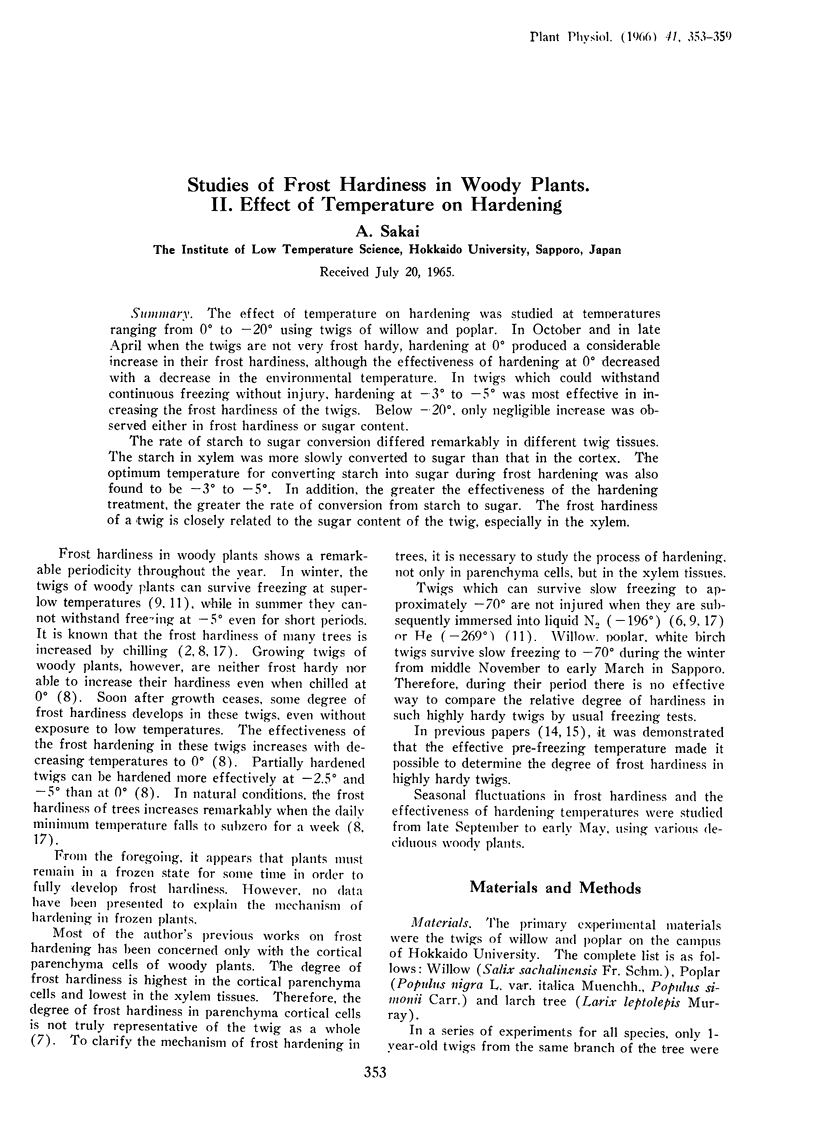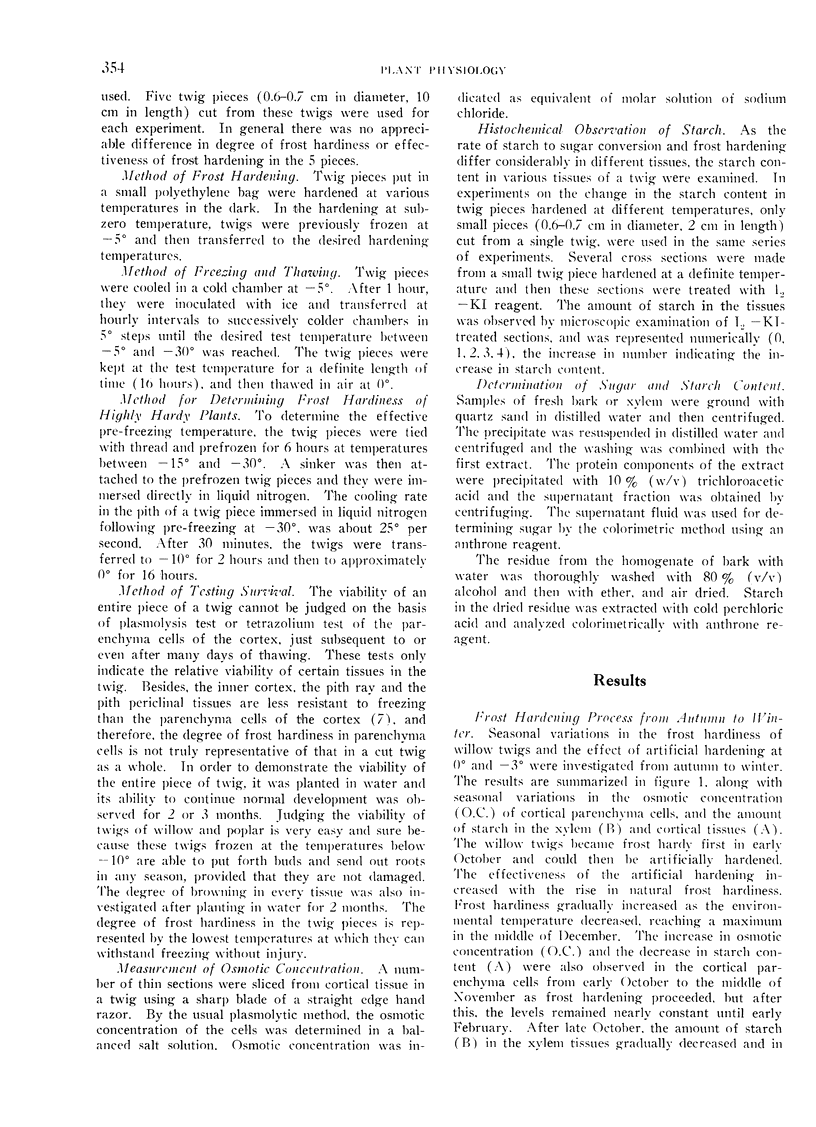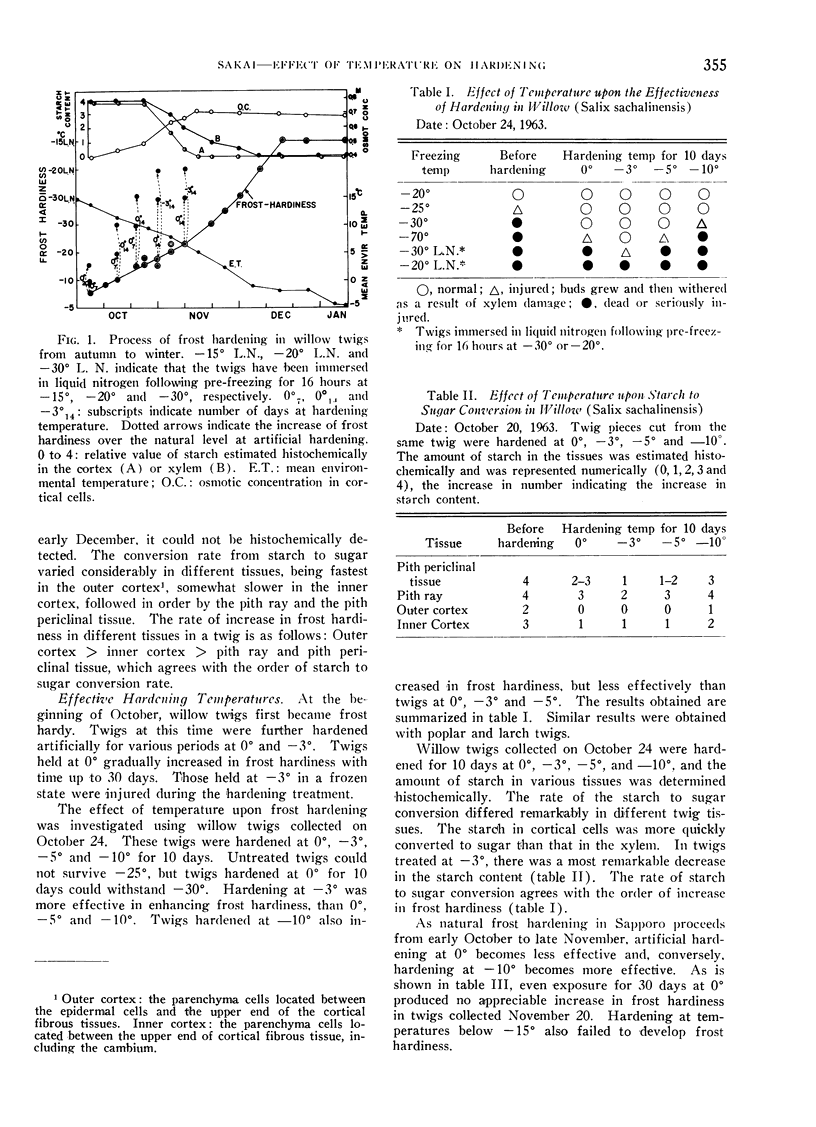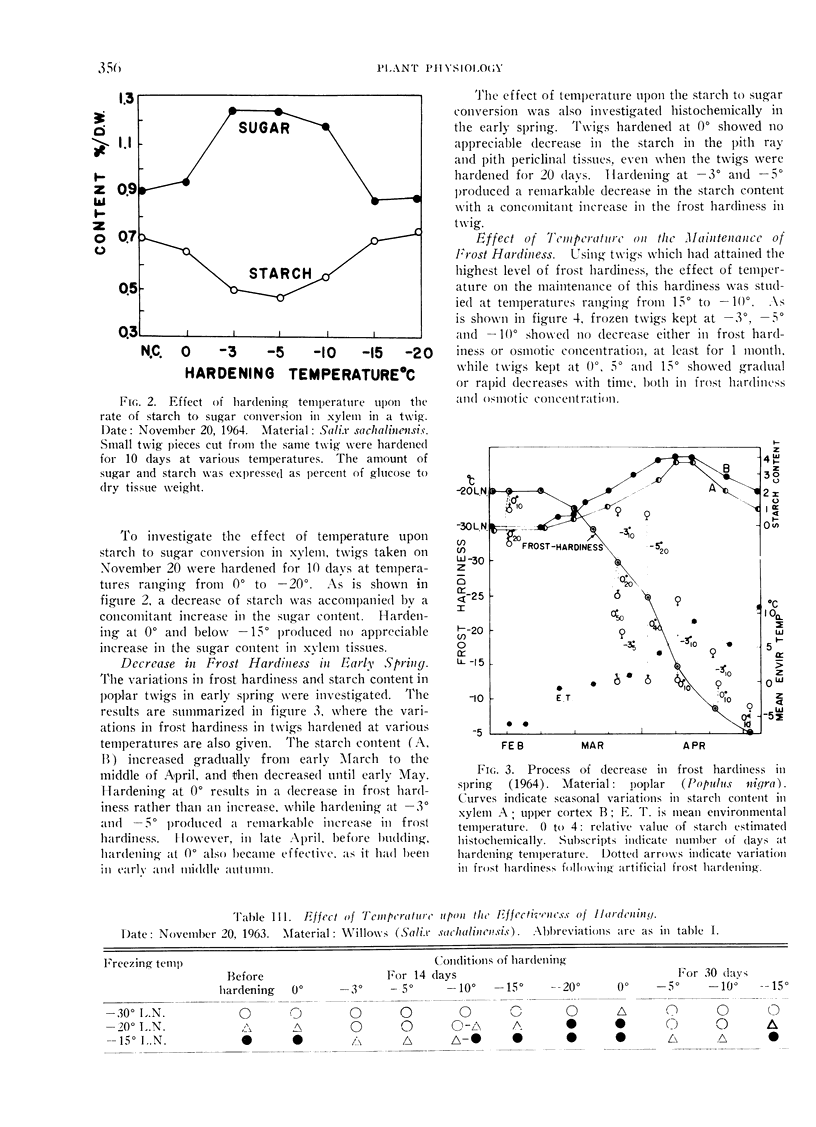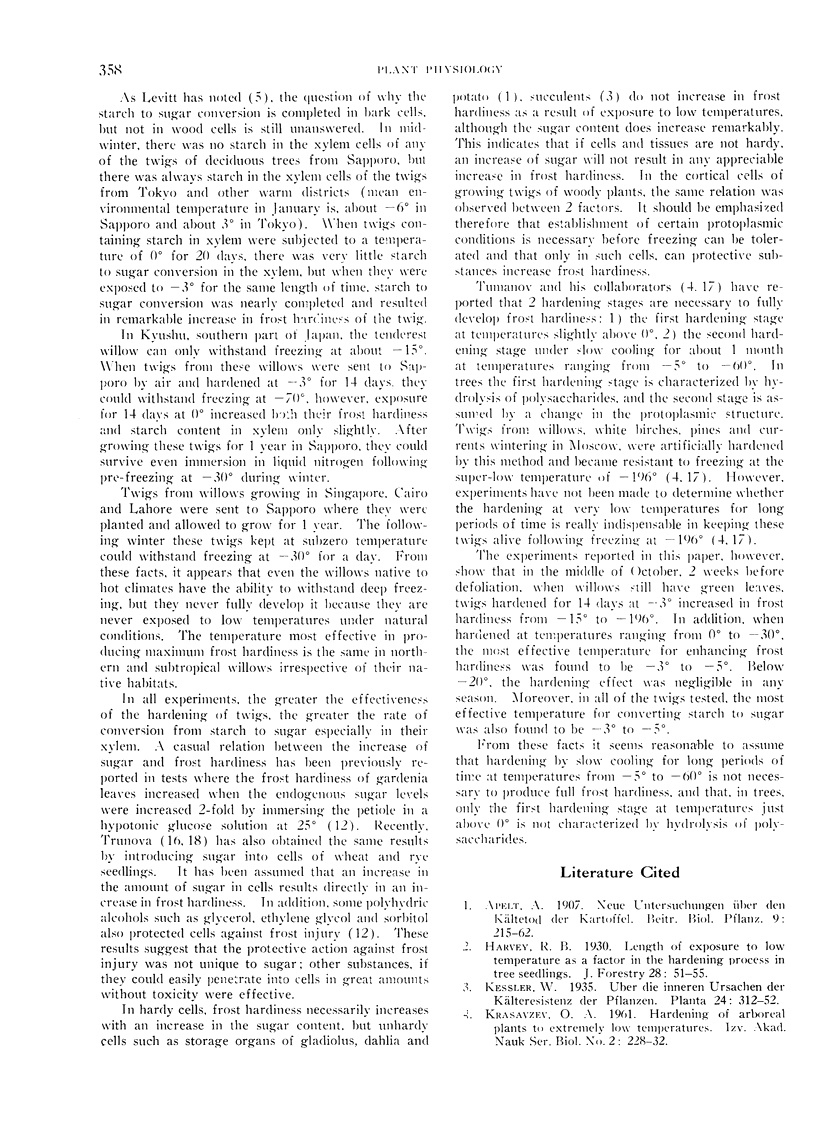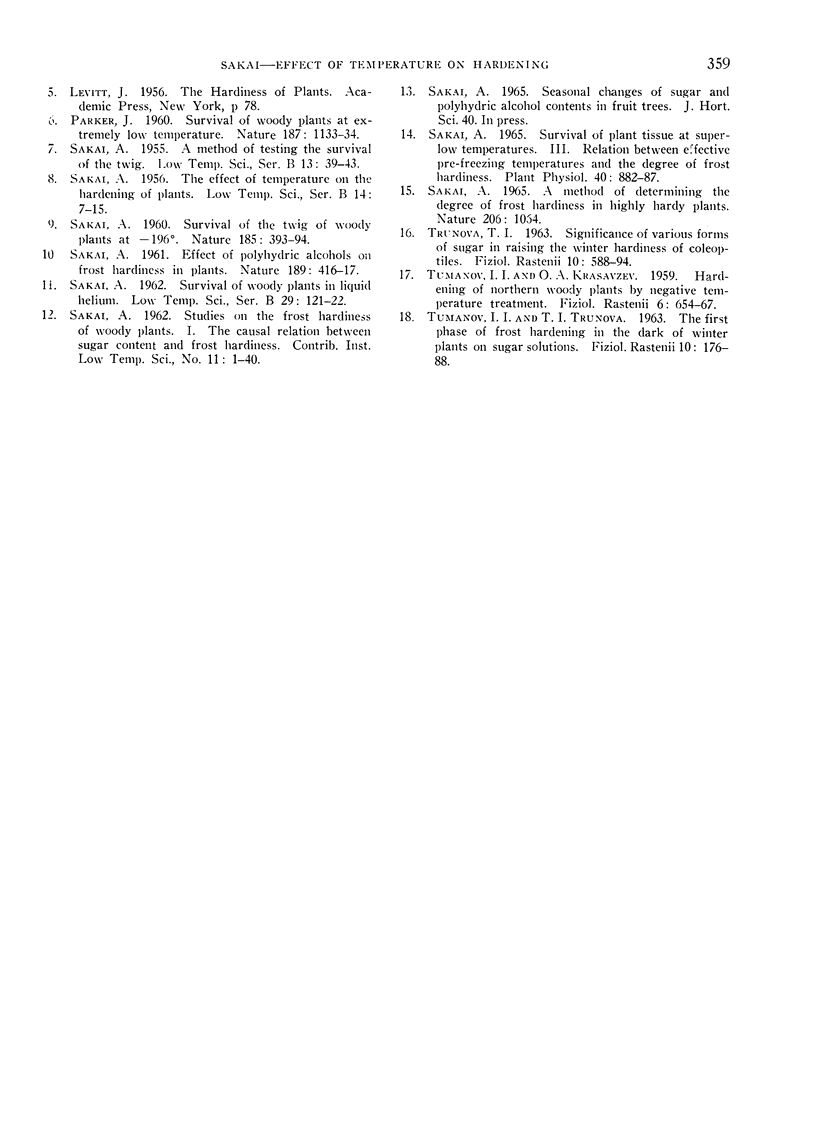Abstract
The effect of temperature on hardening was studied at temperatures ranging from 0° to −20° using twigs of willow and poplar. In October and in late April when the twigs are not very frost hardy, hardening at 0° produced a considerable increase in their frost hardiness, although the effectiveness of hardening at 0° decreased with a decrease in the environmental temperature. In twigs which could withstand continuous freezing without injury, hardening at −3° to −5° was most effective in increasing the frost hardiness of the twigs. Below −20°, only negligible increase was observed either in frost hardiness or sugar content.
The rate of starch to sugar conversion differed remarkably in different twig tissues. The starch in xylem was more slowly converted to sugar than that in the cortex. The optimum temperature for converting starch into sugar during frost hardening was also found to be −3° to −5°. In addition, the greater the effectiveness of the hardening treatment, the greater the rate of conversion from starch to sugar. The frost hardiness of a twig is closely related to the sugar content of the twig, especially in the xylem.
Full text
PDF